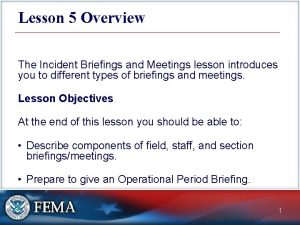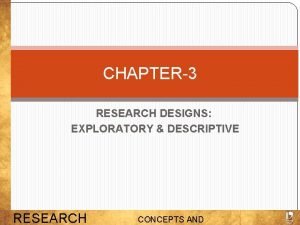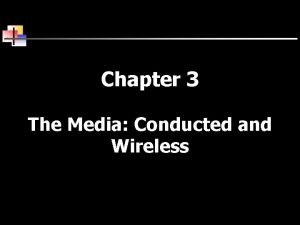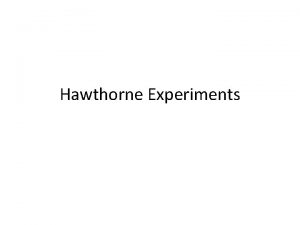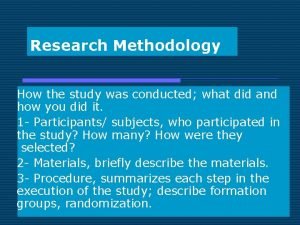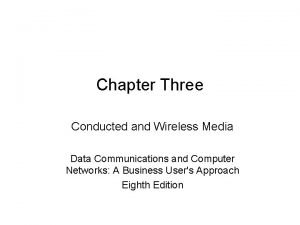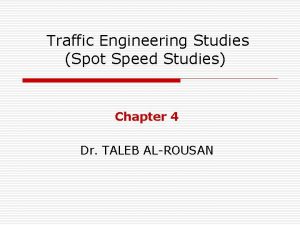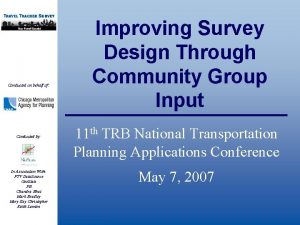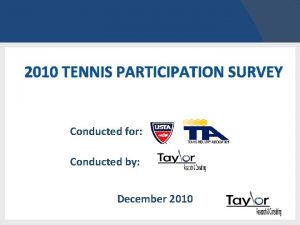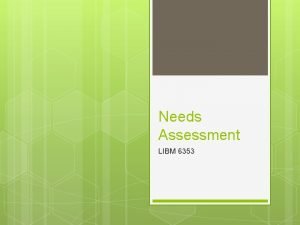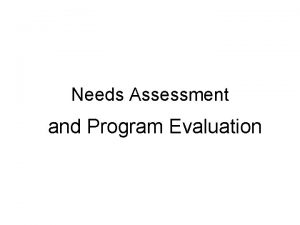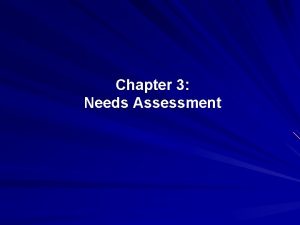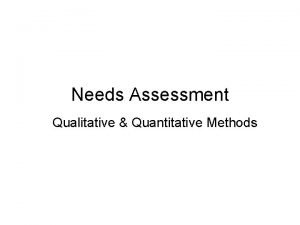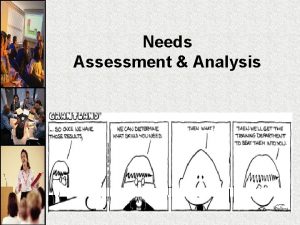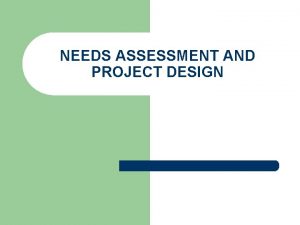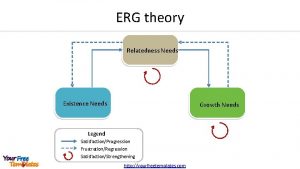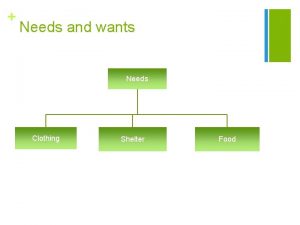Needs Assessment A Miniworkshop on Needs Assessment Conducted















- Slides: 15

Needs Assessment A Mini-workshop on Needs Assessment Conducted by: Thomas E. Grayson, Ph. D. (2002). A Mini-workshop on needs assessment. Assessment of Programs and Services in Student Affairs (APSSA). Office of the Vice Chancellor for Student Affairs. Champaign, Illinois

Goals of Workshop Ø Long Term: To enable you to conduct useful needs assessments that inform and lead to action that will improve programs, services, organizational structure and operations. Ø Short Term: To enable you to understand the nature and purpose of needs assessment and to help you acquire a basic understanding of how to conduct a needs assessment.

Broadbased definitions of a Needs Assessment Ø A process for identifying the knowledge and skills necessary for achieving organizational goals (Brinkerhof & Gill, 1994). Ø A method of finding out the nature and extent of performance problems and how they can be solved (Molenda, Pershing, & Reigeluth, 1996).

Broadbased definitions of a Needs Assessment Ø A process for pinpointing reasons for gaps in performance or a method for identifying new and future performance needs (Gupta, 1999). Ø A systematic approach to identifying social problems, determining their extent, and accurately defining the target population to be served and the nature of their service needs (Rossi, P. H. , Freeman, H. E. , & Lipsey, Mark, W. L. , 1998).

Diagnostic Definition of Need A need is anything essential for a satisfactory mode of existence or level of performance. In other words, needs are tied to what’s indispensable, that is, necessary. Scriven, M. , (1999). Needs Assessment: concepts and practical tools. An evaluation workshop conducted at The Evaluators’ Institute, Washington, DC. , July 18, 1999

Needs vs. Wants & Preferences Diagnostic needs are in some sense “necessary, ” whereas wants are “desired” or “preferred. ” Wants are felt and conscious. They are just preferences, unless, of course, they also happen to be a need. Wants are malleable, opinions, wishes, etc. Scriven, M. , (1999). Needs Assessment: concepts and practical tools. An evaluation workshop conducted at The Evaluators’ Institute, Washington, DC. , July 18, 1999

So, what is a needs assessment? …a systematic set of procedures undertaken for the purpose of setting priorities and making decisions about program or organizational improvement and allocation of resources. The priorities are based on identified needs (Witkin & Altschuld, 1995, p. 4).

Purpose of a Needs Assessment Ø To generate ideas and document perceptions about various issues (exploratory in nature) Ø To collect information to support likely alternatives (decision making) Ø To estimate relative acceptability of various alternatives (identifies potentially controversial issues) Ø To select the most acceptable policy or program from alternatives (allows stakeholders to influence institutional response to needs) Ø To determine whether needs have been met (documents effectiveness of unit) Schuh, J. , Upcraft, L. , & Associates. (2001). Assessment practice in student affairs: An applications manual. San Francisco, CA: Jossey-Bass

Key Factors in Conducting NAs Ø Needs assessment is a participatory process; it is not “done to people. ” Ø Needs assessment is a political activity. Some people may view the process as causing a loss of control. Priorities derived may be counter to entrenched ideas in the system. Ø Data gathering methods by themselves are not a needs assessment. Data collection is but one component in the process. Witkin, B. R. , & Altschuld, J. W. , (1995). Planning and conducting needs assessments: A practical guide. Newbury Park, CA: Sage Publications

Where should we focus the needs assessment? Ø Focus on the ends to be attained, rather than the means. This means we must know where we want to go…mission, goals & outcomes (Witkin & Altschuld, 1995). Ø Institutions should narrow their focus and use their assets to advance their mission, rather than to broaden their focus and dilute what they do best (Schuh, Upcraft & Associates, 2001).

Target Groups & Level of Need Ø Level 1: (primary) – the focus is on service receivers: students, clients, patients, information users, etc. Ø Level 2: (secondary) – the focus is on service providers and policy makers: teachers, parents, administrators, caseworkers, professional staff, support staff, etc. Ø Level 3: (tertiary) – the focus is on resources or solutions: buildings, facilities, equipment, supplies, technology, programs, delivery systems, working conditions, time allocations, etc. Witkin, B. R. , & Altschuld, J. W. , (1995). Planning and conducting needs assessments: A practical guide. Newbury Park, CA: Sage Publications

Three-Phase Plan for Conducting a Needs Assessment z Phase 1 - Pre-assessment (exploration) z Phase 2 - Assessment (data gathering) z Phase 3 - Post-assessment (utilization) Witkin, B. R. , & Altschuld, J. W. , (1995). Planning and conducting needs assessments: A practical guide. Newbury Park, CA: Sage Publications

Needs Assessment Tools 1) 2) 3) 4) 5) 6) Surveys Questionnaires Interviewing Focus Groups Observations Performance Measures a) b) c) d) Ranking Grading Scoring Rating

Needs Assessment - Conclusion Needs assessment is an essential tool in making sure that the programs that are offered are needed and that new interventions will meet an unaddressed need of students and other clients. Unless systematic needs assessments are conducted, precious resources are wasted addressing problems that do not exist. Schuh, J. , Upcraft, L. , & Associates. (2001). Assessment practice in student affairs: An applications manual. San Francisco, CA: Jossey-Bass

Needs Assessment Process (Final Thoughts) Ø First focus…either performance needs or treatment needs…level 1, 2 or 3 Ø Needs assessment is an inquiry tool. The process must be flexible and must look for the facts. Ø Look for needs, not wants. Ø Look for failure data or fault data, then look for treatment data and comparative data. Ø Ask the client to compare: “Tell me, how do you compare this to another experience. ” Ø Direct approach: Ask, “What do you think? How does it look to you? ” Ø Indirect approach: Ask, “What do you think others think? ” Ø More needs assessment fail probably because of inadequate data presentation than for any other reason. Ø Use mixed methods…both quantitative and qualitative, when possible.
 Strategic gender needs and practical gender needs
Strategic gender needs and practical gender needs Primary needs and secondary needs
Primary needs and secondary needs Target needs and learning needs in esp
Target needs and learning needs in esp Satisfaction
Satisfaction Simple claustral complex
Simple claustral complex What is the red scare
What is the red scare Staff level briefings are conducted
Staff level briefings are conducted En 61000-6-3
En 61000-6-3 How is descriptive research conducted
How is descriptive research conducted Capture beat
Capture beat Cjis security policy
Cjis security policy What is conducted media
What is conducted media Mica splitting test room
Mica splitting test room Study was conducted
Study was conducted Conducted media
Conducted media What is spot speed
What is spot speed






